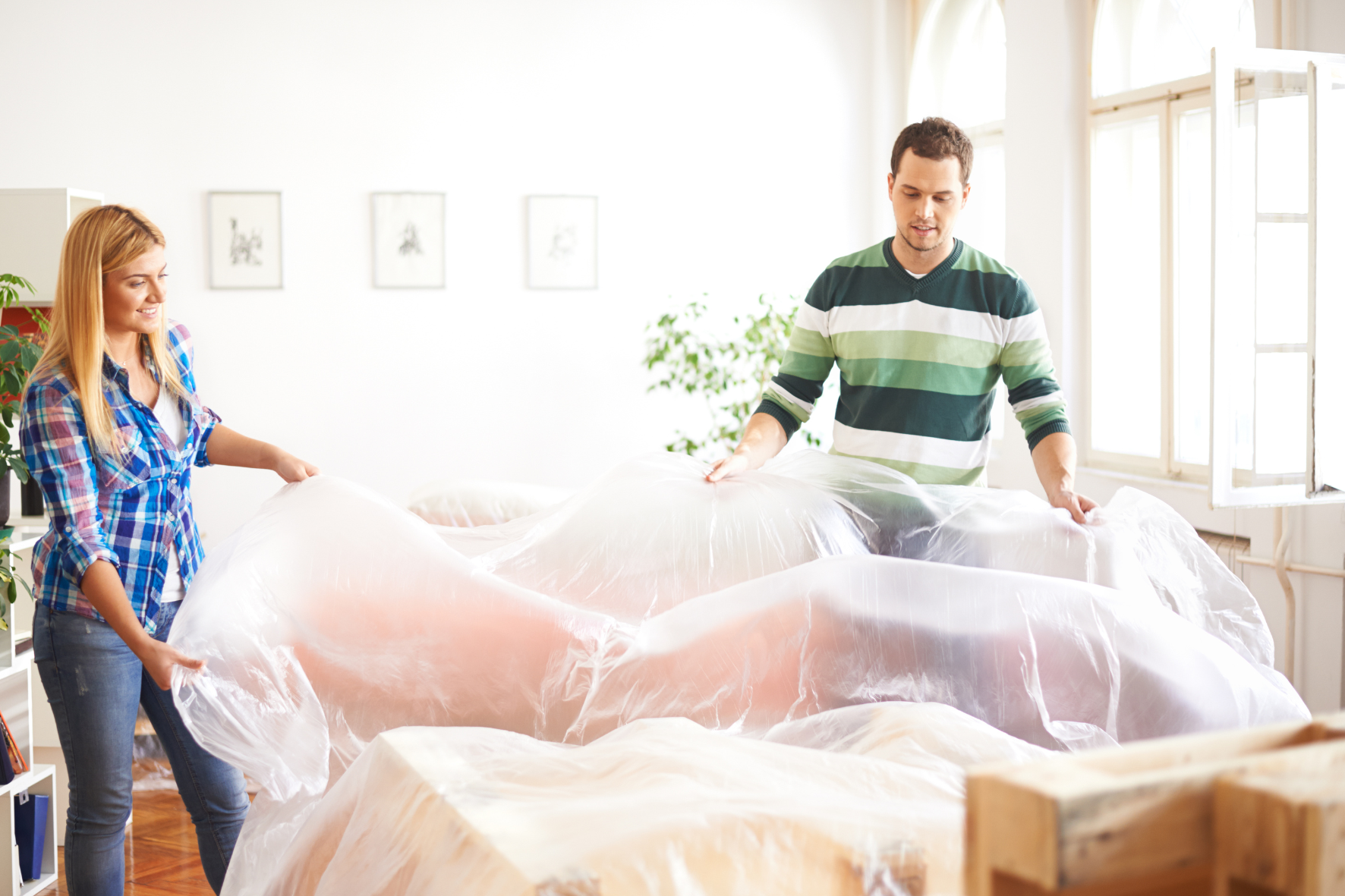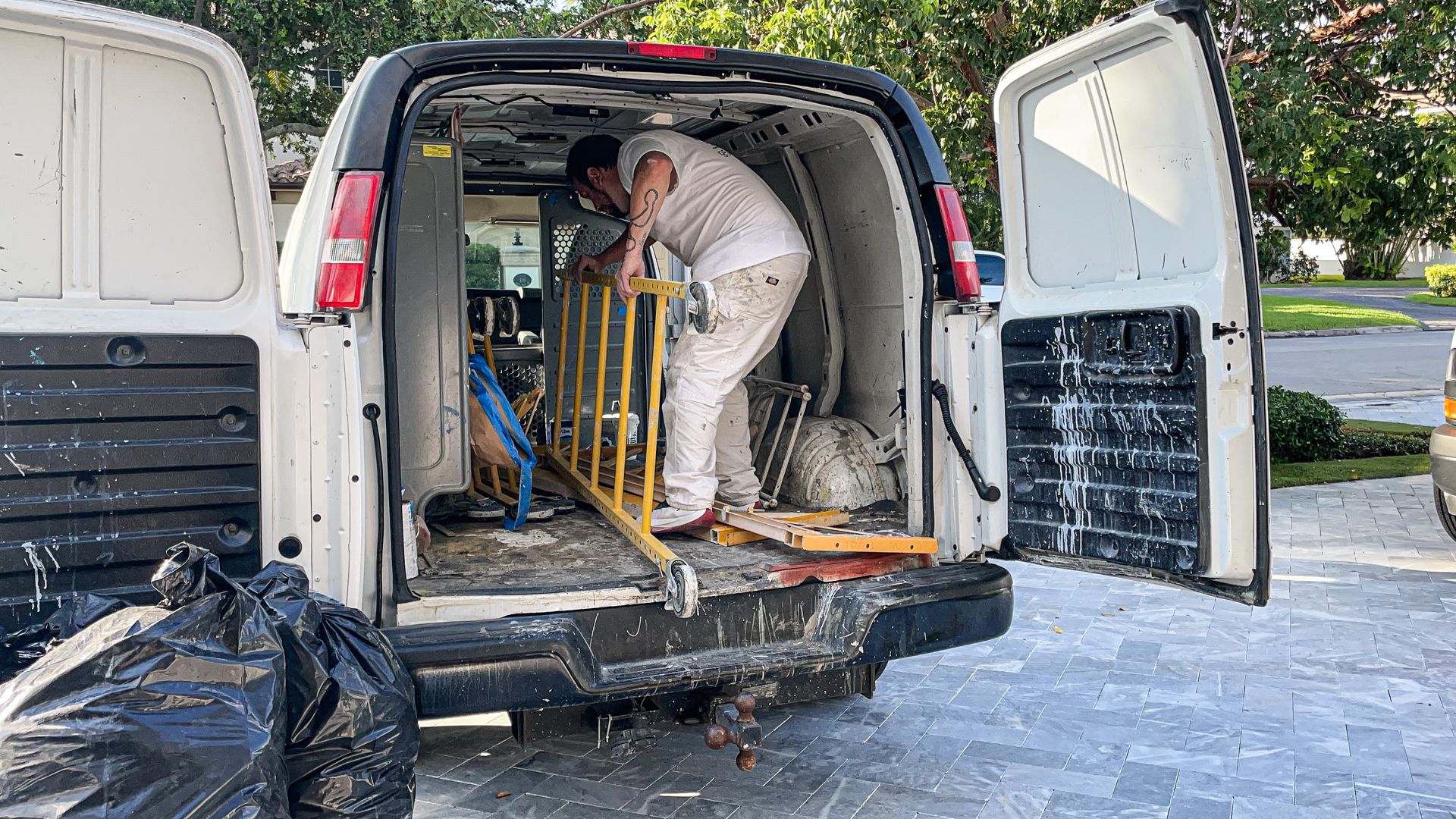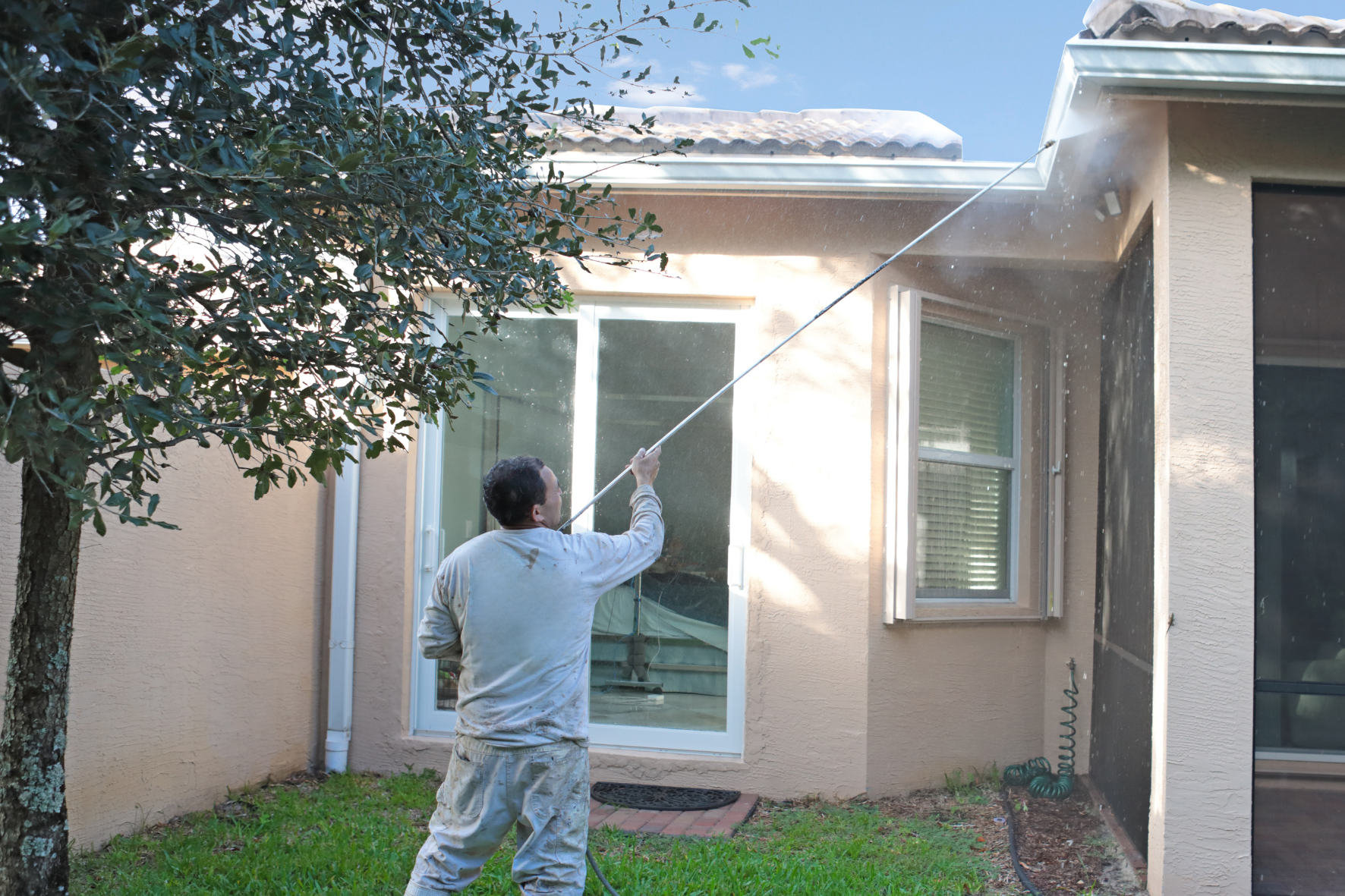When you hire a professional painting company to give your South Florida home a fresh coat of paint, whether inside or outside, proper preparation can make all the difference in ensuring that the job goes smoothly and efficiently. Not only does preparing your home make the painter’s job easier, but it also helps protect your belongings and minimizes disruptions to your daily life.
A little effort ahead of time can result in a positive experience and a beautiful, long-lasting paint job.
In this guide, we’ll walk you through the key steps you should take to prepare your South Florida home before the painting crew arrives, covering everything from moving furniture and cleaning surfaces to ensuring easy access and considering any necessary repairs. By following these steps, you’ll be ready for a successful and stress-free painting project.
Moving Furniture: Creating Space for the Painters
One of the first steps in preparing your home for painting is moving furniture out of the way. Clearing the space allows the painters to move freely, ensuring that they can do their job without obstacles and reducing the risk of damage to your belongings.
Move Small Furniture: Start by moving smaller furniture items such as nightstands, coffee tables, chairs, and lamps out of the room. These items are relatively easy to relocate and can be temporarily stored in another room or area of your home.
Handle Large Furniture: When it comes to larger items like sofas, beds, and dining room tables, the process may require a bit more planning. You have a few options:
Move Furniture to the Center of the Room: If you don’t have space to store large furniture elsewhere, consider moving it to the center of the room and covering it with a protective tarp or plastic sheeting. This provides the painters with enough room to access the walls while keeping your furniture protected. Store Furniture in a Garage or Storage Unit: If you have a garage or basement, consider moving the larger pieces there temporarily. Alternatively, renting a short-term storage unit can be a practical solution for keeping your furniture safe and out of the way during the painting project.
Label and Organize: As you move furniture, it can be helpful to label items or take pictures of their placement to make it easier to put everything back in order once the painting is complete. This will save you time and effort when it’s time to return your home to its usual state.

Remove Ornaments and Wall Hangings: Protecting Fragile Items
Before the painting crew arrives, it’s important to remove any items hanging on your walls. This step ensures that delicate objects are not accidentally damaged during the painting process.
Remove Wall Art and Decorations: Take down paintings, pictures, mirrors, clocks, and other wall hangings. Carefully wrap them in bubble wrap or soft blankets to protect them from damage. Store these items in a safe place until the painting is finished. Pack Away Fragile Ornaments: If you have fragile decorative items on shelves or mantels, such as vases, figurines, or candleholders, pack them away in boxes or containers with padding. Even though painters will likely cover your furniture with drop cloths, it’s better to be safe and avoid the risk of something getting knocked over or broken. Clear Shelves and Cabinets: For any built-in shelves or open cabinets, clear away knick-knacks, books, and decorative objects. Removing these items not only protects them but also gives the painters easier access to the walls and trim.
Declutter the Space: Simplify the Area for Efficiency
Decluttering the space before painting is essential for both the painters and your peace of mind. A clutter-free area is easier to work in and reduces the chances of accidents or mishaps.
Declutter Countertops and Surfaces: Clear off countertops, tabletops, and other surfaces in the room. Whether it’s a kitchen, bathroom, or living area, removing items like small appliances, toiletries, or electronics will make it easier for the painters to work and prevent damage to your belongings. Organize Closets and
Cabinets: If your closets or cabinets are being painted, take the time to remove items from them. This step allows the painters to access the interior without having to move your belongings. Plus, it’s a great opportunity to declutter and organize your storage spaces!
Plan for Temporary Storage: Depending on the scope of the painting project, you may need to find temporary storage solutions for items that usually occupy the space being painted. Consider using storage bins or containers to keep everything organized and easily accessible once the project is completed.
Vacate the Area: Planning for Minimal Disruption
While the painters are working, it’s important to plan for minimal disruption to your daily routine. Depending on the size of the project, you and your family may need to vacate certain areas of the home temporarily.
Plan for Limited Access: When a room or multiple rooms are being painted, access to those areas will be restricted for a period of time. Plan ahead by gathering any items you’ll need during the day, such as clothing, toiletries, or electronics, and moving them to a different part of the house. Consider Temporary
Accommodations: If the entire home is being painted or if fumes from the paint are a concern, you may want to consider staying elsewhere for a day or two. Booking a hotel or staying with friends or family can provide a comfortable escape from the noise, fumes, and inconvenience of having your home painted. Keep Children and
Pets Safe: Children and pets should be kept away from the work area to ensure their safety. Paint fumes, tools, and equipment can pose hazards to little ones and curious animals. If possible, arrange for pets to stay with a friend or family member, or consider using pet boarding services during the painting project. Create a “Safe Zone”: Designate a part of your home as a “safe zone” where you and your family can retreat while the painters are working. This space should be separate from the areas being painted and can serve as a temporary living area where you can relax, eat, and go about your day without disruption.

Clean Surfaces: Prepping for a Smooth Finish
Proper surface preparation is key to a successful paint job. While professional painters will often handle the majority of the prep work, it’s a good idea to give your walls and surfaces a head start by cleaning them beforehand.
Dust and Wipe Down Surfaces: Dust and dirt can interfere with paint adhesion, so take the time to wipe down the walls, baseboards, and trim before the painters arrive. Use a damp cloth or sponge to remove dust, cobwebs, and smudges.
Vacuum and Sweep the Area: After cleaning the walls, vacuum and sweep the floors to remove any dust or debris that could get kicked up during the painting process. This will help ensure a clean environment for the painters to work in. Spot Clean Stains: If there are any stains on the walls, such as grease marks, fingerprints, or crayon marks, try to spot clean them before the painting begins. Removing these stains will help the paint adhere evenly and result in a smoother finish.
Prepare the Exterior: Getting Your Home’s Exterior Ready for Painting
If you’re having the exterior of your home painted, additional preparation steps are necessary to ensure the best results. Exterior surfaces require a different level of attention due to exposure to the elements and potential damage from weather.
Power Washing: Before painting the exterior of your home, it’s essential to have the surfaces power washed to remove dirt, mildew, and loose paint. This step provides a clean surface for the new paint to adhere to and ensures a long-lasting finish. Many professional painting companies offer power washing services as part of their exterior painting package.
Make Necessary Repairs: Inspect the exterior of your home for any signs of damage, such as cracks, holes, or rotting wood. If there are repairs that need to be made, such as replacing damaged siding or filling in gaps, it’s best to address these issues before painting begins. Depending on the extent of the damage, you may need to hire a handyman or contractor to make the repairs.
Trim Landscaping: Overgrown trees, shrubs, and plants can obstruct the painters’ access to your home’s exterior. Trim back any landscaping that may be in the way, ensuring that the painters have a clear path to work on the siding, trim, and other surfaces.
Remove Outdoor Furniture and Decorations: Just as you would with indoor furniture, move outdoor furniture, grills, and decorations away from the house to give the painters room to work. Store these items in a garage or shed, or move them to the center of the yard and cover them with protective tarps.

Access and Obstructions: Ensuring Easy Access for the Painters
Making sure that the painters have easy access to all areas of your home is crucial for a smooth and efficient job. Consider any potential obstructions that could slow down the process and take steps to eliminate them before the project begins.
Clear Pathways: Ensure that pathways leading to and from the areas being painted are clear of obstacles. This includes hallways, staircases, and doorways. Move any items that could be in the way, such as shoes, bags, or furniture.
Provide Access to Electrical Outlets: Painters often need access to electrical outlets for equipment such as sprayers, sanders, and lights. Make sure that outlets are easily accessible and not blocked by furniture or other objects. If extension cords are needed, ensure that they are in good condition and placed in a way that avoids creating tripping hazards.
Coordinate with the Painters: Before the project begins, communicate with the painting crew to discuss any specific access needs or concerns. This is especially important if certain areas of your home are difficult to reach or if you have any special requests regarding access.
Preparing for a Successful Painting Project
By taking the time to prepare your home for a painting company’s arrival, you can help ensure a smooth, efficient, and successful project. From moving furniture and removing wall hangings to cleaning surfaces and planning for minimal disruption, each step plays a role in setting the stage for a beautiful, high-quality paint job.
Remember that proper preparation not only makes the painters’ job easier but also helps protect your belongings and minimizes the risk of damage. With a little effort and attention to detail, you can enjoy a positive experience and a freshly painted home that looks its best.
When you’re ready to give your home a new coat of paint, trust the professionals who have the experience and expertise to deliver outstanding results. Whether you’re painting the interior or exterior of your home, taking the time to prepare properly will ensure a stunning outcome that you can enjoy for years to come.
Tru Colors Contracting offers professional interior and exterior painting services for both residential and commercial properties in South Florida. We also take the hassle out of preparation by providing stucco repairs , pressure washing , waterproofing and metal refinishing to ensure a smooth and flawless finish. Contact us today for a free quote and to discuss your project—let’s bring your vision to life with expert craftsmanship and attention to detail!

